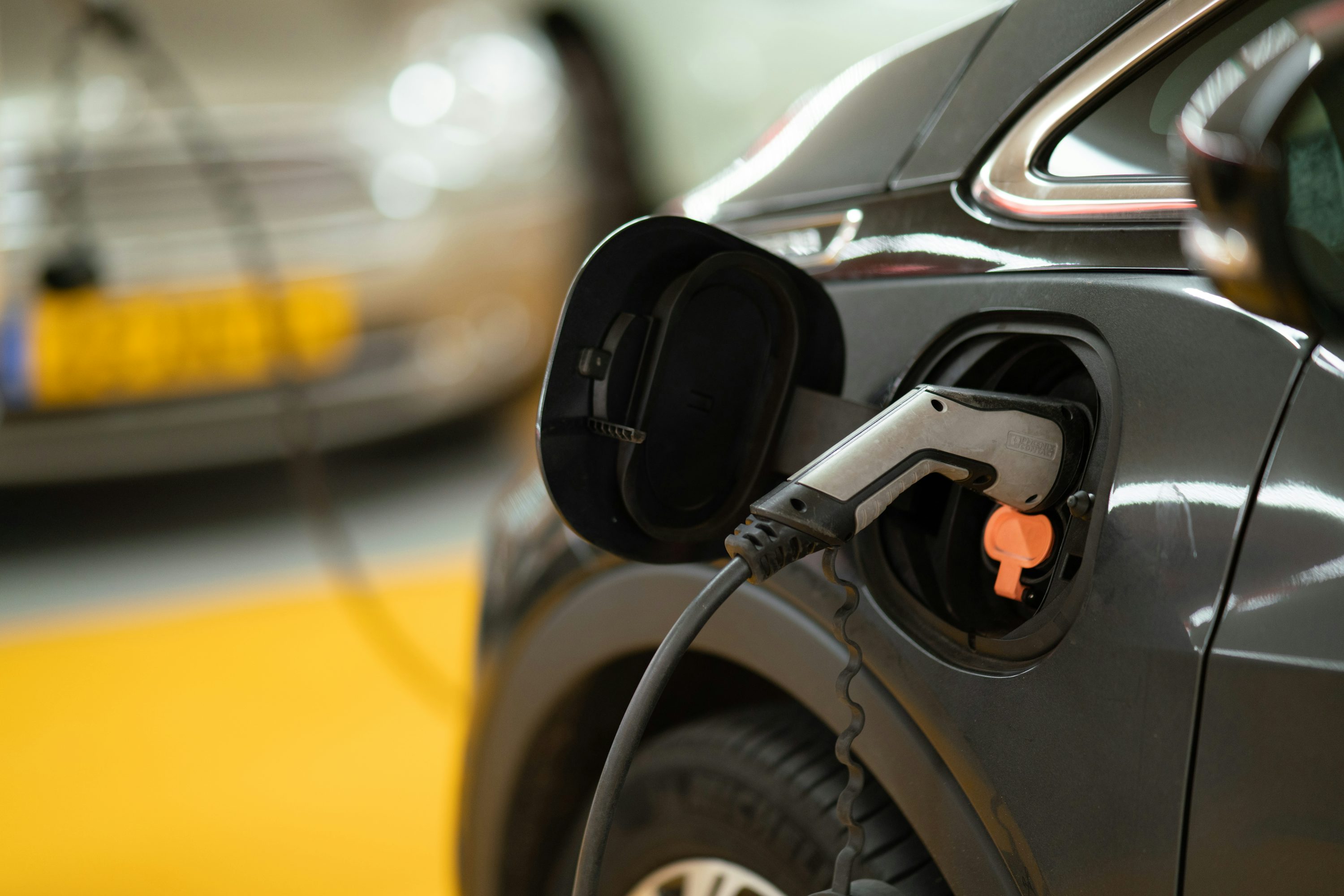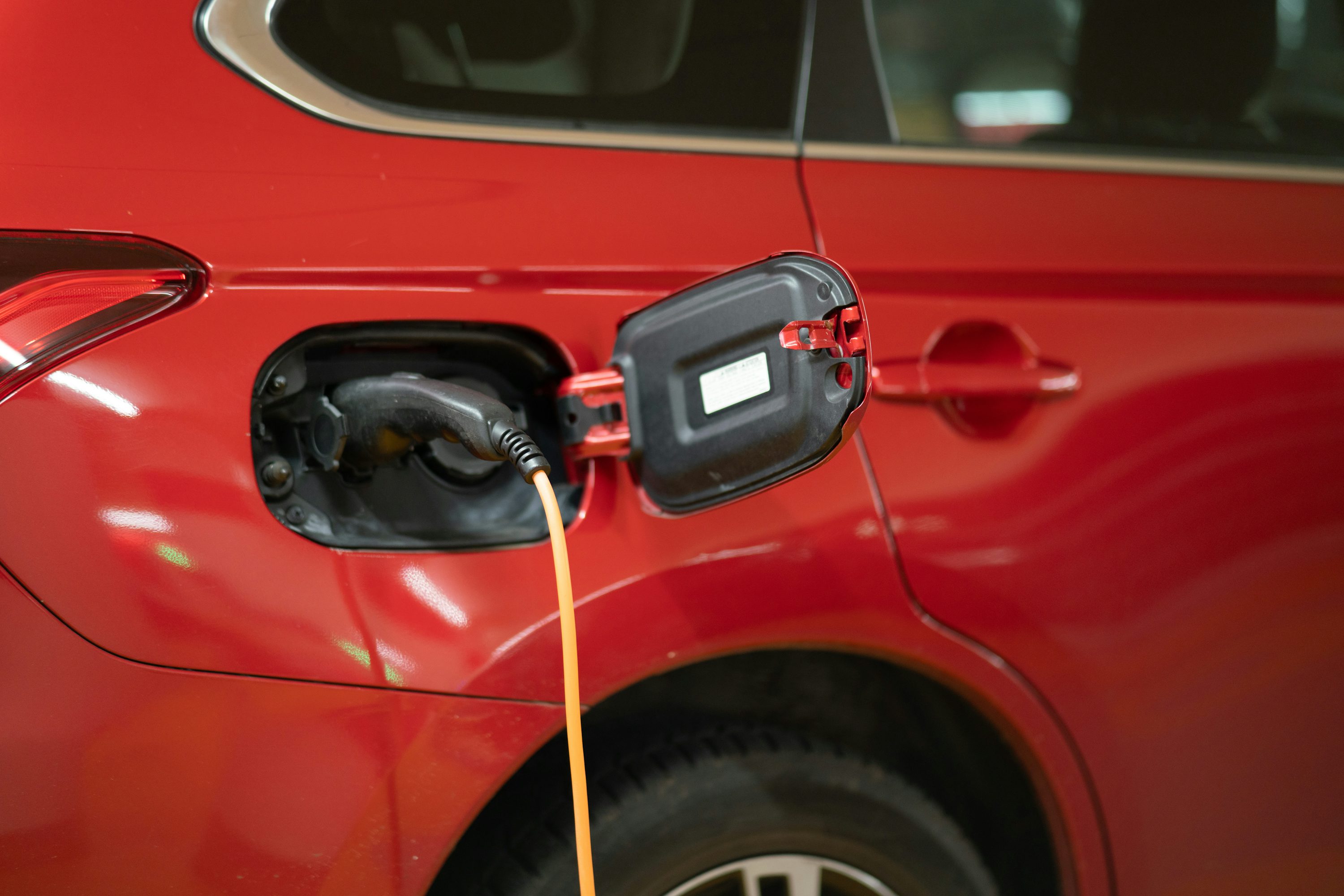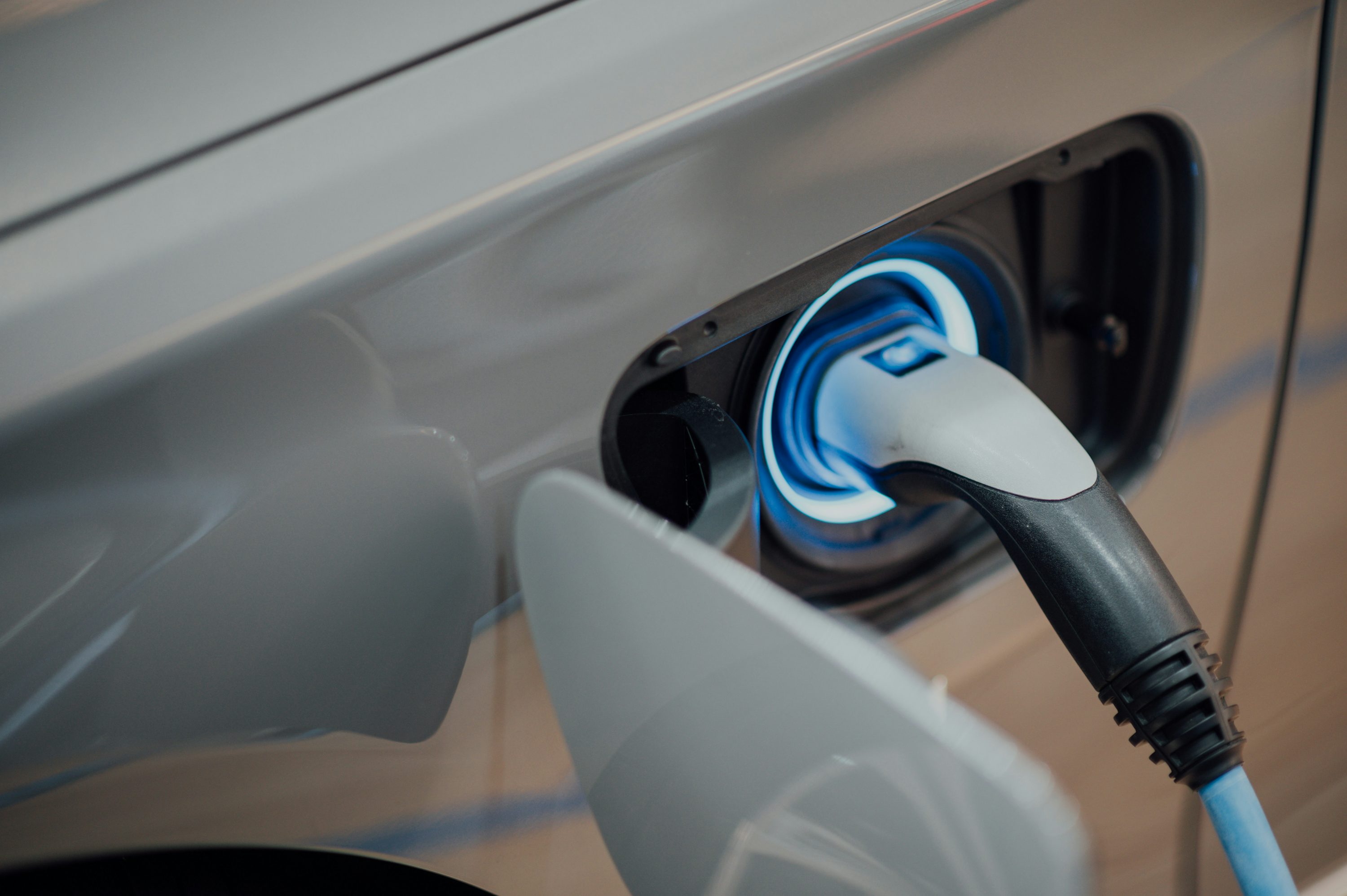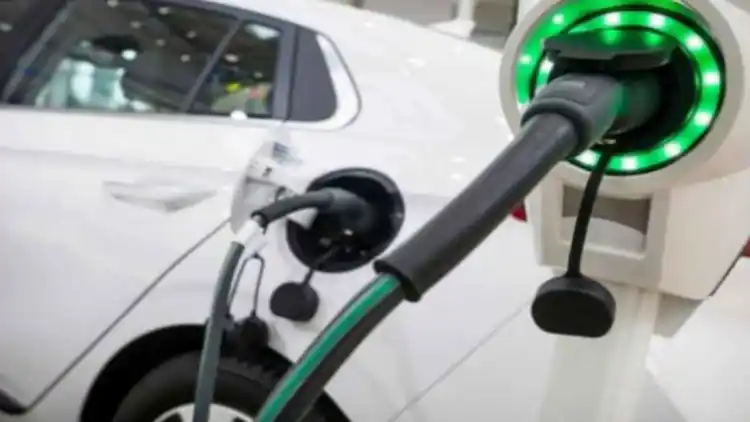- Understanding Your Charging Options
- Smart Charging Strategies
- Cost Comparison Table
- Common Mistakes to Avoid
- FAQ
Thinking about getting an electric vehicle? Or maybe you already own one? Understanding electric vehicle charging is key to a smooth and worry-free journey. This guide will help you power up your vehicle with ease, whether you're at home or out and about.
Understanding Your Charging Options
Choosing the right way to charge your electric vehicle is important. There are different types of charging that fit various needs and lifestyles. Knowing your options helps you always have power ready for your next drive.
Home Charging Basics
Setting up a home charging station is often the most convenient choice for daily use. It allows you to charge your car overnight, just like you would charge your phone. Having a dedicated home charging setup saves you time and makes sure your car is ready each morning.
When thinking about home charging, you will usually look at two main types:
Level 1 Charger: This charger usually comes with most electric vehicles. It plugs into a standard wall outlet, like the one you use for lamps or small appliances. Level 1 charging is quite slow, often taking 24 to 48 hours for a full charge. This makes it best for overnight charging when you don't need a lot of miles quickly. It adds about 3 to 8 kilometers (2 to 5 miles) of range per hour.
Level 2 Charger: This option provides much faster charging at home. A Level 2 charger needs professional installation, similar to setting up a new appliance like an oven. It connects to a special 240-volt outlet. With Level 2 home charging, you can often fully charge your car in 4 to 8 hours. This offers a charging speed of about 32 to 48 kilometers (20 to 30 miles) of range per hour. It’s perfect for getting a good charge during dinner or overnight.
No matter which level you choose, make sure you have a dedicated circuit breaker. This helps to prevent electrical overloads and keeps your home safe. Also, look for ENERGY STAR-certified models. These chargers are designed to be more energy-efficient, which can save you money on your electricity bills over time by reducing the overall cost of electric vehicle charging at home.
Public Charging Stations
Public charging stations are useful when you are away from home, such as during a long trip or while running errands. Finding these public charging points has become much easier with modern tools. These stations offer different charging speeds, including super-fast options for quick top-ups.
Use these handy tools to easily find public charging stations near you:
Navigation Apps: Popular apps like Google Maps or Waze have built-in features to locate electric vehicle charging points. Many of these apps can even show real-time availability, telling you if a charger is free or in use. You can also often filter by the type of plug your car needs, like CCS, CHAdeMO, or TeslaUAE TeslaBahrain TeslaEgypt TeslaKSA TeslaKuwait TeslaOman TeslaQatar Tesla superchargers, before you even leave your spot.
Network Apps: Specific charging network apps, such as ChargePoint or EVgo (these are just examples of common charging networks), provide detailed information. They show real-time pricing for electric vehicle charging, charger status, and sometimes even allow you to start and stop a charge directly from your phone. Joining these networks often gives you access to special discounts and makes the charging process smoother.
Shopping Centers and Businesses: Many businesses, especially large shopping centers, are now adding electric vehicle charging stations as a service for their customers. It's a growing trend; for example, a large number of malls now offer free charging while you shop or dine. This can be a great way to top up your battery without extra electric vehicle charging costs.
Pro Tip for Public Charging: Always filter stations by the plug type your car uses. Common plug types include CCS (Combined Charging System), CHAdeMO, and Tesla's unique connector for their vehicles. Knowing your car's plug type saves you time and ensures compatibility before you drive to a station. This helps you get the right charging speed for your vehicle.
Smart Charging Strategies
Charging your electric vehicle involves more than just plugging it in. Smart charging strategies can help you save money, extend your car's battery life, and ensure you always have enough range for your travels. Making a few small changes to how you charge can make a big difference over time.
Timing Matters
When you charge can affect your electric vehicle charging costs. Electricity rates often change throughout the day, depending on demand.
Charge during off-peak hours: Many utility providers offer lower electricity rates during times when fewer people are using power. This usually happens late at night, often between 10 PM and 6 AM. By setting your car to charge during these off-peak hours, you can significantly reduce your electric vehicle charging expenses. It's a smart way to manage your overall charging cost.
Pre-condition your battery while plugged in: In very hot or very cold weather, your car's battery works harder to reach its best operating temperature. Many electric vehicles have a feature that lets you pre-condition the battery while it's plugged in. This means the car uses wall power to bring the battery to a good temperature before you leave. This saves your battery's internal charge for driving and improves your vehicle's range and performance, especially in extreme conditions.
Battery Care Tips
Just like any battery, your electric vehicle's battery lasts longer if you treat it well. Good habits for electric vehicle charging can extend the life of your car's most expensive component.
Keep charge levels between 20% and 80% for daily use: For most daily driving, it's best to keep your battery charge between a minimum of 20% and a maximum of 80%. Regularly charging to 100% or letting the battery often drop below 20% can put extra stress on the battery over time. Only charge to 100% when you need the full range for a long trip.
Avoid frequent fast charging unless necessary: DC fast charging offers amazing speed, but using it very often can create more heat in the battery. While modern electric vehicles have systems to manage this, consistent use of the highest charging speeds can slightly reduce the long-term health of your battery. Try to use Level 2 charging (at home or public AC chargers) for daily needs and save fast charging for when you truly need a quick boost on the road.
Cost Comparison Table
Understanding the potential electric vehicle charging costs helps you budget and make smart choices. The price you pay can depend on where and how you charge. This table gives you an idea of average costs and charging speeds.
Charging Type | Average Cost (per mile/km) | Typical Charging Speed (per hour) |
|---|---|---|
Home (Level 2) | ~$0.04–$0.08 USD (~0.15–0.29 AED/SAR) | 32–48 km (20–30 miles) |
Public Fast | ~$0.10–$0.25 USD (~0.37–0.92 AED/SAR) | 160–320 km (100–200 miles) |
Note:These are estimated prices and speeds. Actual costs and charging speed will vary based on your location, your electricity provider's rates, the specific charging network, and your vehicle's charging capabilities. Electricity prices are subject to change. The AED/SAR values are approximate conversions for illustrative purposes.
Common Mistakes to Avoid
To ensure safe and efficient electric vehicle charging, it's good to know what practices to avoid. Skipping these common mistakes can help protect your car, save you money, and make your electric vehicle ownership experience even better.
❌ Using extension cords for Level 1 charging: It might seem easy, but regular household extension cords are not made to safely handle the continuous power draw required for Level 1 electric vehicle charging. This can lead to overheating, potential fire hazards, and damage to your charger or vehicle. Always plug your Level 1 charger directly into a dedicated wall outlet.
❌ Letting battery drop below 10% regularly: Consistently running your electric vehicle's battery down to very low charge levels (below 10%) can put unnecessary stress on the battery. While modern vehicles have systems to protect against deep discharge, making it a habit can affect the battery's long-term health and capacity. Try to plug in before the battery gets too low to preserve its overall life and maintain optimal charging speed.
❌ Ignoring station network membership discounts: Many public electric vehicle charging networks offer membership programs or discounts for frequent users. By signing up, you can get lower rates per kilowatt-hour, free charging sessions, or other perks. Always check if the charging station you use is part of a network that offers savings. This can significantly reduce your total public electric vehicle charging cost over time.
FAQ
Here are answers to some of the most common questions about electric vehicle charging. We aim to keep the information simple and useful for your everyday needs.
Q:How long does a full charge take?
A: The total electric vehicle charging time depends greatly on the charger type and your vehicle's battery size. For most modern electric vehicles, it breaks down like this:
Level 1 (standard outlet): This takes the longest, usually 24 to 48 hours for a full charge from nearly empty.
Level 2 (home or public AC charger): This is much faster, typically taking 4 to 8 hours for a full charge.
DC Fast Charging (public rapid charger): This is the quickest option, often charging your battery from 20% to 80% in just 20 to 45 minutes.
Q:Can I charge in heavy rain?
A: Yes, you absolutely can! All electric vehicle chargers and their connectors are designed and built to be weatherproof and safe for outdoor use, even in heavy rain or snow. They undergo rigorous testing to ensure safety in various conditions. Just make sure the charging port and connector are free of standing water before plugging in, and avoid fully submerging any part of the equipment in water.
Q:What’s the best way to extend battery life?
A: To maximize your electric vehicle's battery life, follow these key tips:
Avoid full charges daily: For everyday driving, try to keep your battery charged between 20% and 80%. Only charge to 100% when you need the full range for a long trip.
Minimize extreme temperatures: High heat (above 35°C or 95°F) and extreme cold can impact battery health. Try to park in shaded areas in hot climates or use your car's climate pre-conditioning feature when plugged in to get the battery to an optimal temperature before driving.
Limit frequent fast charging: While convenient, over-reliance on DC fast charging can generate more heat and slightly degrade the battery over time. Use Level 2 charging for daily needs whenever possible.
Q:Are electric vehicle charging costs cheaper than gas?
A: On average, most electric vehicle drivers find that their electric vehicle charging costs are significantly lower than gasoline expenses. Many drivers report saving 50% to 70% compared to filling up a traditional gas car. However, the exact savings can vary widely depending on several factors. These include the local electricity rates in your area, how often you use public fast chargers versus cheaper home charging, and your personal driving habits. It's often cheaper to charge at home, especially during off-peak hours.
Read More:
2025 FJ Cruiser Fuel Tank CC: Maximizing Range & Efficiency
2025 Honda Civic Battery Size:Your Complete Owner's Guide
Mitsubishi Attrage vs Toyota Yaris 2025:7 Comparisons for Buyers












